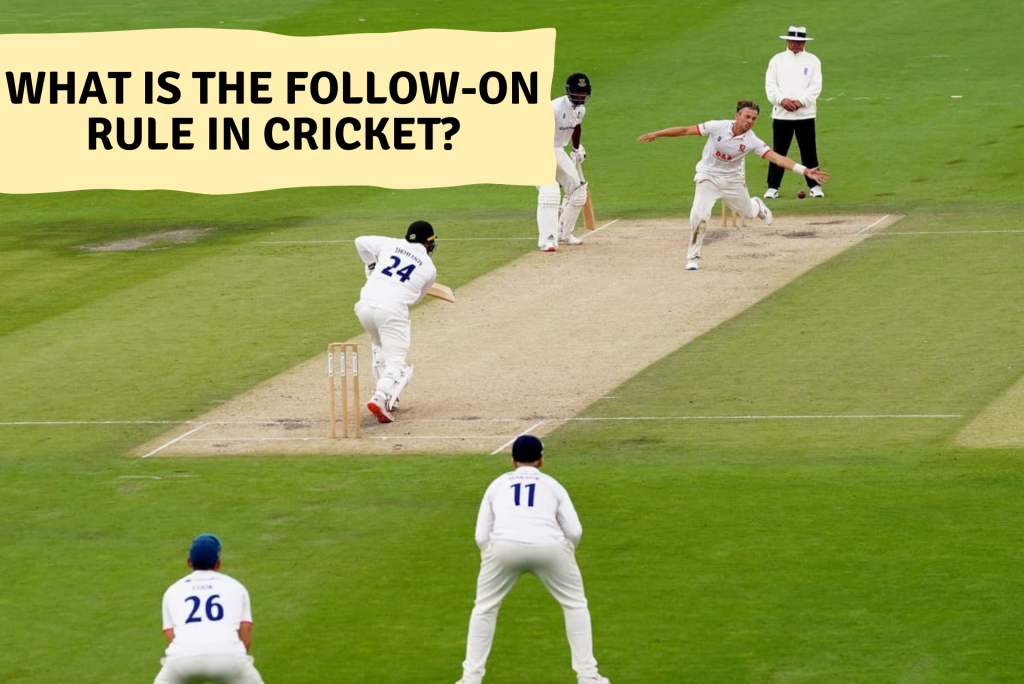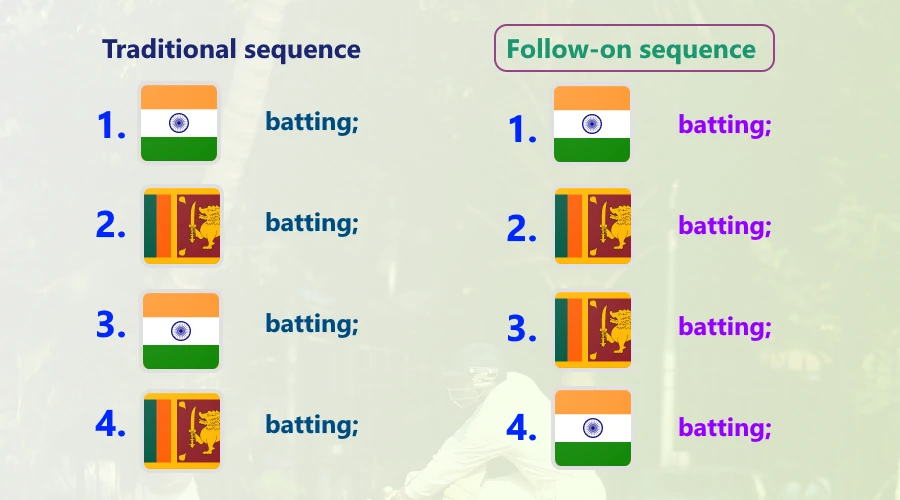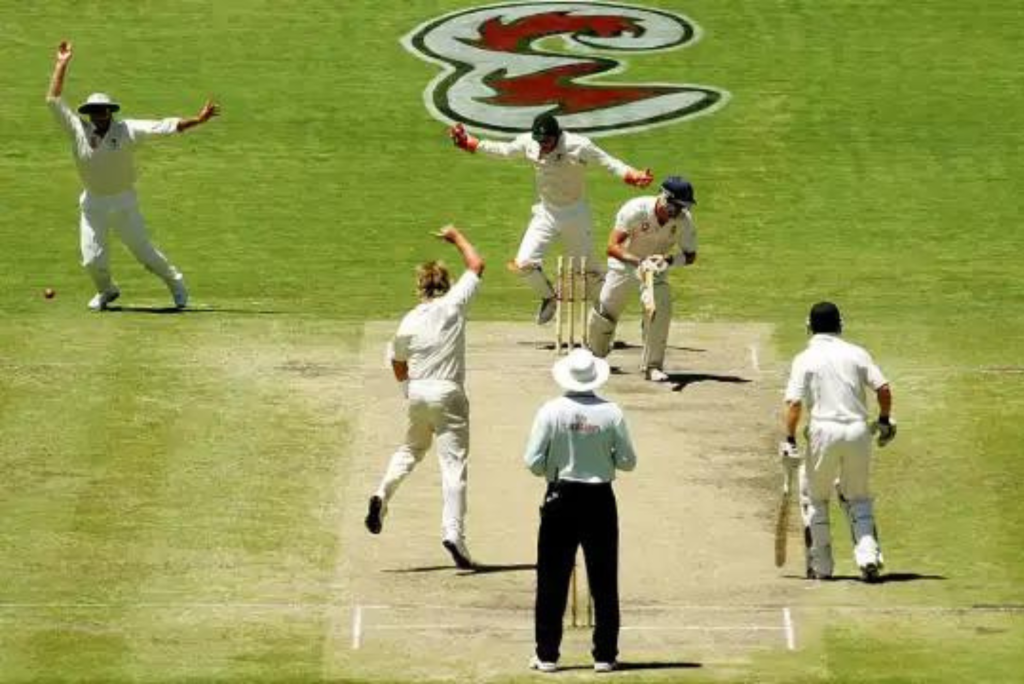Understanding The Follow-On Rule In Cricket – The Pros and Cons
Cricket, a sport celebrated for its intensity and strategic play, often presents captivating scenarios that shape the outcome of matches. One such scenario is the follow-on in cricket.
In this comprehensive guide, we will delve into the intricacies of the follow-on rule in cricket. We will provide you with a thorough understanding of its significance and implications in the game.
1. What is the Follow-on Rule In Cricket?
The follow-on in cricket serves a specific purpose and is designed to maintain fairness in longer formats of the game, such as Test matches.
Here’s a breakdown of what the rule entails and why it’s important:
The follow-on rule allows the team batting first to enforce a strategic decision upon obtaining a significant lead over their opponents. By choosing to enforce the follow-on in cricket, the team aims to maximize its advantage and potentially secure a decisive victory.

The primary purpose of the follow-on in cricket is to prevent one team from gaining an unfair advantage by extending their lead. It ensures fair competition and keeps the match engaging for players and spectators alike.
2. How Does the Follow-on Rule in Cricket Work?
To enforce the follow-on in cricket, the team that batted first must obtain a substantial lead over their opponents, typically around 200 runs in Test cricket.
However, it’s important to note that the exact criteria for the follow-on rule may vary depending on the cricketing regulations in different cricket formats and tournaments.
When a team chooses to enforce the follow-on, the opposing team is immediately sent back to bat again without a break. This places tremendous pressure on the team following on, as they are essentially trailing by a significant margin.
The intention behind the follow-on rule is to provide an opportunity for a result in a match that may otherwise have ended in a draw.
For example, consider one of the rules of Laws of Cricket. It explains such conditions:
| leading in the number of runs | duration of the match in days |
| 75 | 2 |
| 100 | 3 |
| 150 | 4 |
| 200 | 5 and more |
An example of how the batting sequence changes when using Follow-on:

3. Pros and Cons of Enforcing the Follow-on Rule in Cricket
Enforcing the follow-on can offer several advantages to the team in a dominant position.
Pros:
Here are some key benefits:
- Psychological Impact: Enforcing the follow-on can have a profound psychological impact on the opposing team. It puts them under immense pressure, as they not only have to overcome the deficit but also face the challenge of batting last on potentially deteriorating pitch conditions.
- Fatigue and Weariness: The follow-on can exploit the physical and mental fatigue of the opposition’s players, particularly their bowlers. With little rest between innings, tired bowlers may struggle to maintain their effectiveness, leading to potential wicket-taking opportunities for the fielding team.
- Saving Time: By enforcing the follow-on, the team batting first can accelerate the pace of the match and potentially secure a victory within the designated time frame. This can be advantageous, especially in Test matches where time constraints often play a key role.
Cons:
While enforcing the follow-on can provide certain advantages, it also carries inherent risks and potential disadvantages:
- Fatigue for Bowlers: The same physical and mental fatigue that affects the opposition’s bowlers can also impact the team enforcing the follow-on. Their own bowlers may become weary, reducing their effectiveness and increasing the risk of injuries.
- Pitch Deterioration: As the match progresses, the pitch may deteriorate, particularly in Test matches. This can make batting more challenging for the team enforcing the follow-on, as the deteriorating conditions might favor the opposition’s spinners or seamers.
- Weather Conditions: Unpredictable weather can disrupt matches, and enforcing the follow-on increases the risk of adverse weather affecting the outcome. If the team enforcing the follow-on loses considerable playing time due to rain or bad light, it can significantly impact their chances of securing a victory.
4. Notable Instances of the Follow-on Rule in Cricket
Throughout cricket’s history, there have been several memorable instances where the follow-on played a significant role.
Here are a few notable examples:
- Adelaide Test, 2006: In a remarkable display of batting, Australia enforced the follow-on against England after gaining a lead of 445 runs. However, England staged a stunning comeback, eventually winning the match by chasing down a target of 168 runs.

- Kolkata Test, 2001: India famously turned the tables on Australia after being forced to follow-on. VVS Laxman and Rahul Dravid’s heroic partnership of 376 runs led India to a historic victory. They overcame a first-innings deficit of 274 runs.
5. Strategies for Avoiding the Follow-on Rule in Cricket
Teams facing a potential follow-on situation employ various batting tactics to avoid it.
5.1. Batting Tactics to Prevent the Follow-on Situation
Here are some strategies commonly used:
- Solidify Batting Lineup: Building a solid batting lineup is crucial to prevent a collapse and minimize the chances of being forced to follow on. Teams focus on selecting players with sound defensive techniques and the ability to occupy the crease.
- Scoring Strategies: Scoring at a reasonable pace is vital to prevent the follow-on. Teams aim to rotate the strike, find gaps, and accumulate runs steadily without taking unnecessary risks.
5.2. Building Partnerships
Solidifying Innings Building partnerships is essential to avoid the follow-on. Here’s how teams work towards this goal:
- Partnership Building: Batsmen focus on forming strong partnerships, where they support each other and maintain a steady flow of runs. This prevents frequent wicket losses and builds a solid foundation.
- Batting Resilience: Teams emphasize the importance of resilience and mental strength, encouraging batsmen to stay determined and weather difficult periods without losing wickets.
Conclusion
The follow-on rule in cricket adds intrigue and excitement to cricket matches. It has the potential to shape the course of a game and create memorable moments.
Understanding its nuances and strategic implications is crucial for captains, teams, and cricket enthusiasts alike.



